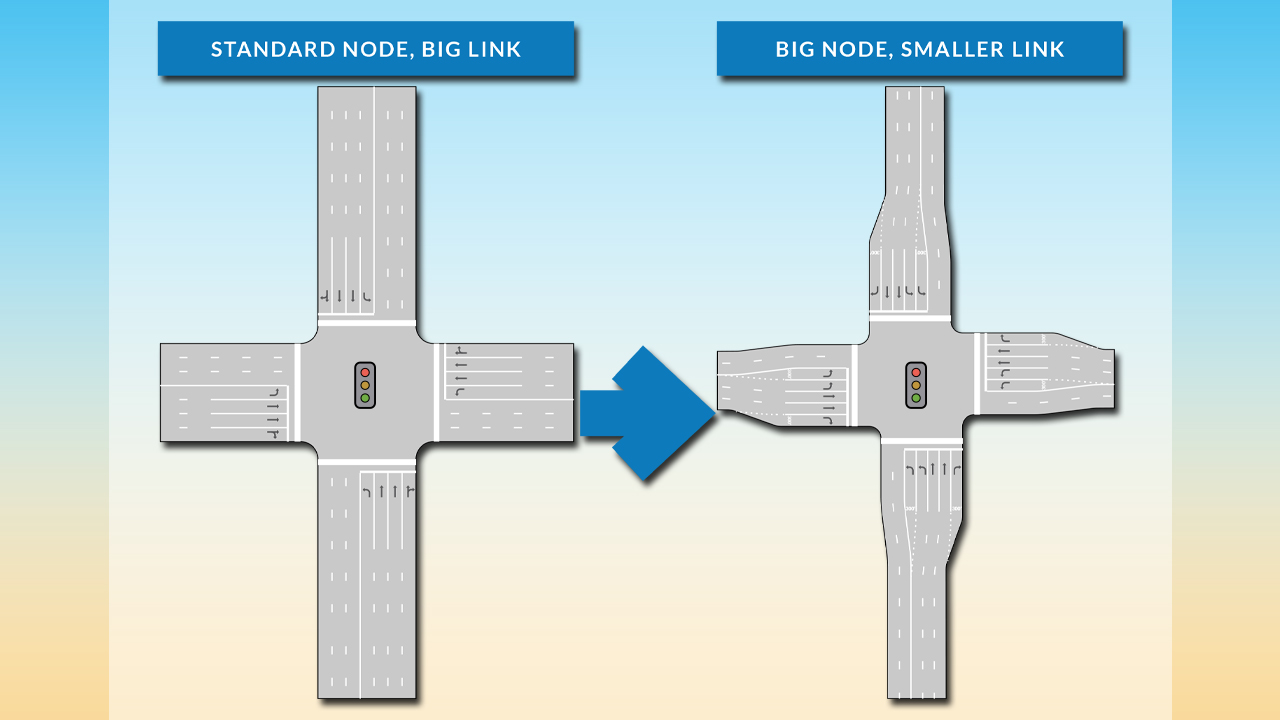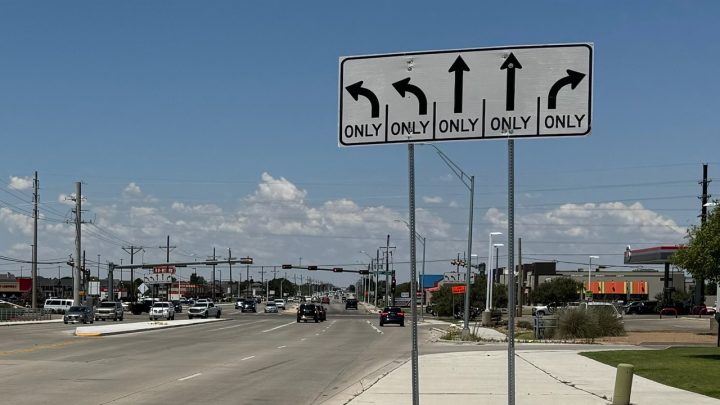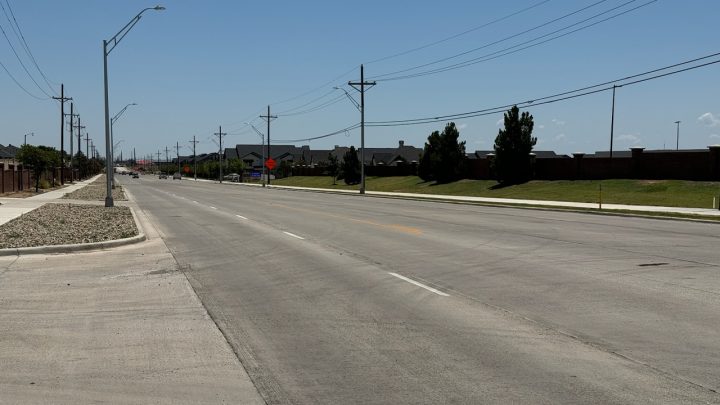114th Street west of Quaker Ave as seen in November, 2023
As Lubbock grows and adds more traffic, the city’s future road projects will usually be five lanes, not the seven lanes built for years on the city’s bigger streets.
However, streets will still expand to seven lanes at intersections. An example is the corner of 114th Street at Quaker Avenue. Traffic approaching Quaker in both directions spreads out to five lanes, with lanes for left turns, going straight and right turns. The traffic going straight past the intersection returns to two lanes.
Why the change?
Money – other reasons too – biking, walking, open space and more emphasis on public transportation.
“Our seven lane thoroughfares, which are typically 110 feet wide are becoming extremely expensive to build. So, there’s a movement now to reduce our construction cost by going to five lanes and still move almost as much traffic as you could with seven lanes,” said David Jones, executive director at the Lubbock Metropolitan Planning Organization, which coordinates federal transportation money between the city, county and a few other local agencies.
Mike Keenum, city engineer, referred to a 2018 study when he talked to lubbocklights.com.
“Everything was seven lanes and we kind of stepped back and said, ‘We don’t need to be half a mile from a seven-lane road everywhere in town,’” said Keenum.
Slideshow: 114th Street near Quaker Ave.
Road ‘rightsizing’
That 2018 study was incorporated into a document called “Plan Lubbock 2040,” Keenum said.
It called for more biking, walking, open space and more public transit.
“ … Road rightsizing should be considered. … This change will build the appropriate size street that saves upfront capital costs and long-term maintenance costs,” the document said.
Lubbock spends about $3 million per mile for every lane. Knocking out two lanes saves $6 million on a mile-long project.
The total width stays at 110 feet but costs go down. because there’s less asphalt or concrete. But what happens to the extra space?
Jones said, “There’s any number of things. It could be parkway – that land area between the sidewalk and the curb. … It could be a wider sidewalk. It could be a bike lane.”
Discussions about bike lanes and pedestrian walkways date back to the 1990s according to the city’s public records.
And nothing prevents the city from building a seven-lane street in a commercial area.
What if the city builds five lanes and later it’s not enough?
“If we needed to – not that we’re anticipating having to widen that – but we can. It makes more sense to pare that down in some cases to say, ‘Five lanes work just fine,’” Keenum said.
Plan Lubbock 2040
Plan Lubbock 2040 was published in 2018. It said Lubbock’s wide roadways are one of the city’s “greatest potential opportunities.” It also said ‘rightsizing’ streets would make room for walking paths, landscaping and bicycle lanes.
Click here and scroll down to page 98 (page numbers are on the upper left of each page) to read more about this part of the plan.
Asking about traffic jams
“Your bottlenecks happen at the intersections,” Keenum said.
Seven lanes don’t add capacity except at the intersections. So, Lubbock is changing to a ‘big node’ and ‘smaller link’ system.
The node is an intersection. It will remain ‘big’ – meaning seven lanes wide just like we see all over town.
The link is the long stretch of straight roadway. There’s a trick to making this work with fewer lanes.
Jones said, “If you put a driveway access on both sides of the street in every location, you’d have congestion.”
The city can regulate access to the streets, according to public records. Jones said the city can simply allow fewer places to stop and turn.
Keenum said, “Congestion is one of the things, but safety is always a factor.”
In balancing safety with congestion, the city can also add special turning lanes in front of certain businesses. Keenum mentioned HEB as one example where a specific stretch of 114th Street is wider.
Add some fancy technology at intersections, which the city displayed during a public meeting in June, to make the lights turn green at just the right time and five lanes can carry just as many cars – or nearly as many according to Jones.

What it looks like
As previously mentioned, the relatively new plan calls for a 110-foot-wide street. Here’s how that breaks down.
There is a 6-foot buffer and a 10-foot-wide sidewalk. There is then a 6-foot “parkway” for trees or grass. Then there’s a gutter, drive lanes and a turn lane.
The diagram below shows the difference between a five-lane and a seven-lane street.

Comment, react or share on our Facebook post.





 Facebook
Facebook